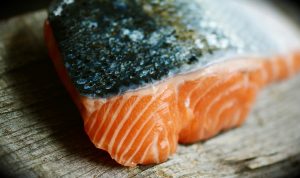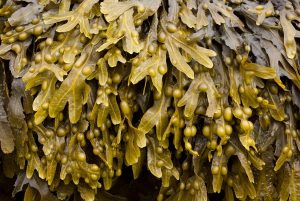Understanding Blisters: Causes, Prevention, and Relief Tips
Blisters can be quite the nuisance, can’t they? Those little fluid-filled bubbles can pop up unexpectedly and tend to make their presence known with a sting. While we might dismiss them as minor irritations, understanding why they form and how to prevent them can make a world of difference, especially if you’re prone to them. Let’s dive deeper into the causes, prevention, and care of blisters with some practical insights. Blisters form as a part of your body’s defense mechanism. When the outer layer of your skin (the epidermis) separates from the layers beneath it, your body fills that space with fluid. This fluid acts as a cushion to protect the underlying tissue and aids in healing. Friction, pressure, burns, and other factors can cause this separation.
Understanding Blister Formation
Your body’s response to blisters is more sophisticated than it seems. The fluid inside, often a clear serum, is actually a filtrate of blood plasma. This fluid not only cushions the damaged area but also brings white blood cells and nutrients that aid in healing. It’s almost as if your body is delivering a mini first-aid kit right where you need it most.
Types of Blisters
- Friction Blisters: These are the most common type and occur when repetitive rubbing or pressure causes the skin layers to separate. They’re often seen on feet and hands, particularly after activities like hiking or manual labor.
- Burn Blisters: Result from thermal burns or sunburns, where heat damages the skin. They can be quite painful and are an indication that the body is trying to protect against further damage.
- Chemical Blisters: Caused by contact with certain chemicals that irritate the skin, such as harsh cleaning agents or even some plants like poison ivy.
- Blood Blisters: Occur when a blood vessel is damaged, and blood leaks into the blister. This type typically results from pinching or crushing injuries.
- Infection-related Blisters: Conditions like chickenpox or herpes zoster can cause blisters as part of their symptoms. These are typically accompanied by other signs of illness, such as fever or fatigue.
Delving into the Causes
Friction and Pressure
Wearing shoes that don’t fit quite right or embarking on a long hike without proper footgear can be a perfect recipe for blisters. The friction from shoes or socks that are too tight, too loose, or made of non-breathable materials can lead to blister formation. The constant rubbing leads to the separation of skin layers.
- Example: Consider marathon runners; they often experience blisters because of the long duration of pressure and movement. Many use specialized running socks and shoes to mitigate this. A friend of mine, an avid runner, swears by double-layer socks that reduce friction between the layers of fabric rather than between the sock and the skin.
Heat and Burns
Blisters from burns are the skin’s way of protecting itself after damage from heat. Whether it’s a sunburn or a kitchen mishap, burns can lead to blistering. The body’s response to heat is to quickly form a blister as a barrier, preventing further damage to deeper skin layers.
- Tip: Applying a cold compress immediately after a minor burn can help reduce blister formation by cooling the skin and reducing inflammation. Aloe vera gel, known for its soothing properties, can also aid in reducing discomfort and promoting healing.
Skin Conditions and Allergies
Certain skin conditions, such as eczema or dermatitis, can lead to blistering. Allergic reactions to substances like nickel, latex, or certain cosmetics can also cause blisters. These allergic blisters are often accompanied by redness and itching.
- Advice: Identifying and avoiding allergens is key. Patch tests can help pinpoint what might be causing the skin’s reaction. For example, a colleague developed blisters from a nickel belt buckle, and switching to a nickel-free alternative solved the issue completely.
Environmental Factors
Extreme temperatures, both hot and cold, can affect the skin’s integrity. Frostbite, for example, can cause blisters as the skin reacts to freezing conditions. Similarly, high humidity can increase sweating, exacerbating friction-related blister formation.
- Preventive Measure: Dress appropriately for the weather. Layering in cold weather and wearing breathable fabrics in the heat can protect your skin. A good pair of moisture-wicking socks can be a game-changer in both summer hikes and winter treks.
Prevention Techniques
Proper Footwear and Clothing
Investing in well-fitting shoes and quality socks can prevent friction-related blisters. Look for breathable, moisture-wicking materials. The right fit ensures minimal movement between the foot and shoe, reducing the likelihood of blisters.
- Case Study: Hikers often choose boots that provide support without being too tight. They might also use moisture-wicking socks to keep feet dry, reducing friction. A seasoned hiker I know always breaks in new boots with short hikes before embarking on longer treks, allowing the boot to mold to the foot gradually.
Protective Barriers
Using products like moleskin, blister pads, or specialized tapes can protect high-friction areas. These barriers can absorb some of the friction and spread the pressure over a larger surface area. They’re particularly useful for spots known to blister easily.
- Example: Many dancers use moleskin to protect their feet from the constant rubbing of dance shoes. A professional ballerina friend applies moleskin in layers to her toes and heels before every performance, effectively preventing blisters during long rehearsals and shows.
Skin Care Routine
Regular moisturizing helps maintain skin elasticity, making it less prone to tearing. Hydrated skin is more resilient and can better resist friction. This is particularly important for athletes or those engaging in activities that involve significant physical movement.
- Tip: Incorporate a daily moisturizer, focusing on areas that are prone to blistering. Look for products with ingredients like urea or glycerin for deep hydration. I can’t emphasize enough how a good moisturizer transformed my running routine, reducing blister occurrences significantly.
Managing Moisture
Keeping your skin dry is crucial, especially in areas prone to sweating. Moisture can exacerbate friction and lead to blister formation. This is especially true in warmer climates or during intense physical activity.
- Practical Advice: Use foot powders to absorb excess moisture or apply antiperspirant to reduce sweating. A friend who regularly attends dance classes swears by antiperspirant on her feet, claiming it has dramatically reduced the frequency of her dance-related blisters.
Treating Blisters
When you find yourself with a blister, the goal is to protect it and allow it to heal naturally. Most blisters will resolve on their own if left untouched. However, there are steps you can take to ensure they heal without complications.
Immediate Care
- Do Not Pop: Popping a blister can introduce bacteria and lead to infection. The fluid inside helps protect the new skin forming underneath.
- Clean and Cover: Gently clean the blister with mild soap and water, then pat it dry. Cover it with a sterile bandage or blister-specific dressing to protect it. A breathable bandage can prevent excess moisture buildup and reduce infection risk.
Monitoring for Infection
Keep an eye on the blister for signs of infection, such as increased redness, warmth, swelling, or pus. If these occur, it’s time to consult a healthcare professional. Infections can escalate quickly, so timely intervention is crucial.
- Red Flags: If you notice red streaks emanating from the blister, or if you develop a fever, seek medical attention promptly. These could be signs of a more serious infection that requires medical treatment.
Professional Intervention
In some cases, especially if a blister is large or particularly painful, seeing a doctor might be necessary. They can safely drain the blister under sterile conditions if needed. A healthcare professional can also prescribe antibiotics if an infection is present.
Common Missteps and How to Avoid Them
- Wearing New Shoes for Long Periods: Always break in new shoes gradually. Wear them for short intervals before using them for extended periods. Patience in this process can save you from unnecessary blisters.
- Skipping Socks: Socks provide a barrier between your feet and shoes, reducing friction. Always wear them to prevent blisters. A high-quality sock can make a huge difference in comfort and blister prevention.
- Ignoring Hotspots: If you feel a hot spot developing, stop and address it immediately. Apply a blister pad or adjust your footwear to prevent a full-blown blister. Recognizing these early signs can save you a lot of discomfort later on.
Advanced Tips and Considerations
- Custom Orthotics: For those with specific foot shapes or conditions, custom orthotics can provide the necessary support and reduce friction. These are particularly beneficial for individuals with flat feet or high arches.
- Heat Moldable Insoles: These can help form a more custom fit to your foot, reducing areas of high pressure. A runner friend of mine saw a drastic reduction in blisters after switching to heat-moldable insoles.
- Regular Foot Checks: Especially important for diabetics, regular checks can catch developing issues early, preventing serious complications. Checking your feet daily can help you spot any potential problems before they become serious.
The Role of Nutrition and Hydration
Interestingly, your diet and hydration levels can influence skin health. Staying well-hydrated helps maintain skin elasticity, while a balanced diet supports overall skin resilience. This isn’t just about drinking water—it’s about ensuring your body has the nutrients it needs to keep your skin healthy.
- Hydration Tip: Aim for at least 8 glasses of water a day, adjusting for activity level and climate. Hydration is key to maintaining skin elasticity and overall health.
- Nutrition Insight: Foods rich in omega-3 fatty acids, like salmon and flaxseeds, can support skin health. Vitamins A, C, and E are also crucial for skin repair and resilience. Incorporating a diet rich in fruits, vegetables, and healthy fats contributes to the overall health of your skin.
Additional Insights and Personal Experiences
Embracing Technology for Prevention
In recent years, technology has given us new ways to prevent blisters. Smart wearables that monitor pressure points on the feet are becoming more accessible. These devices can provide real-time feedback, alerting you to potential problem areas before blisters develop.
- Example: A tech-savvy friend uses a smart insole that tracks pressure distribution in her shoes. After identifying a consistent pressure spot, she adjusted her running form, significantly reducing her blister incidence.
Understanding Your Skin Type
Everyone’s skin is different, and understanding your specific skin type can help in blister prevention. Those with more sensitive skin may need to be extra cautious, adopting a proactive approach to moisturizing and protection.
- Personal Insight: I’ve learned that my slightly dry skin type benefits greatly from a regular exfoliation and moisturizing routine. This practice has reduced the friction-related blisters I used to get on my hands during gardening activities.
Exploring Alternative Remedies
Some alternative remedies, like applying green tea bags or honey to blisters, have anecdotal support for their soothing and healing properties. While scientific evidence is limited, these natural solutions can be worth exploring for their gentle approach to skin care.
- Practical Application: I once used a cooled green tea bag on a particularly painful blister; the tannins in the tea seemed to help reduce swelling and discomfort.
Understanding blisters in depth empowers you to take proactive steps in preventing and managing them. With the right techniques and a bit of vigilance, you can keep these pesky bubbles at bay and enjoy your activities blister-free. If you’ve ever had a blister disrupt an event or sideline you from an activity, you know just how valuable these insights can be in keeping your skin healthy and your life uninterrupted.



